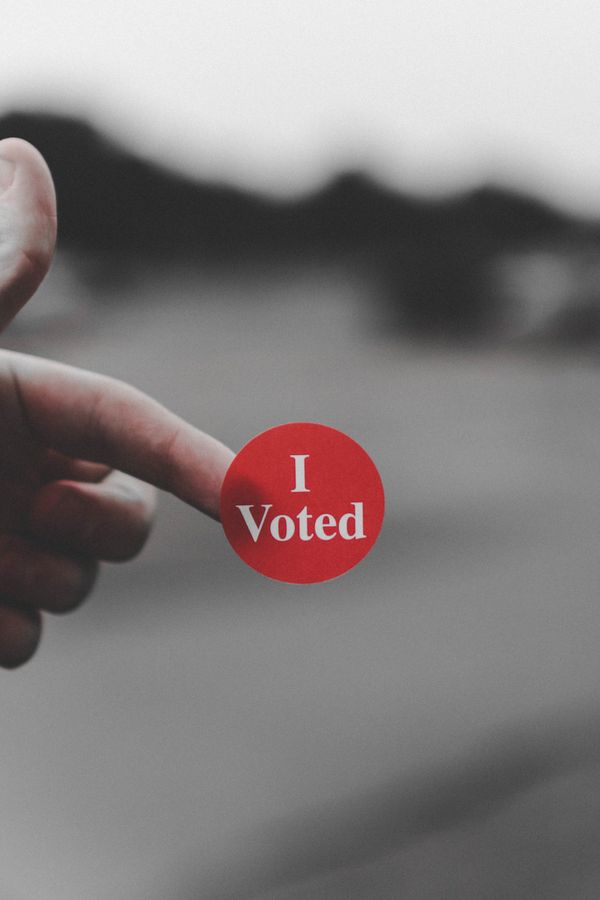Have you ever walked on campus, looked at the faces of your fellow students, and wondered "I wonder what their life is like?"
Maybe you haven't. Maybe you're subconsciously assuming the identities of those around you based on the outside. That's not necessarily a bad thing, but it shows how we can often be narrow-minded as busy college students, which allows us to forget the different types of people that walk among us every day on campus or sit next to us in class and the adversities they face. A lot of the people you come in contact with in college experience things based on the framework of intersectionality.
So, what is intersectionality? According to Merriam-Webster, it's "the complex, cumulative way in which the effects of multiple forms of discrimination (such as racism, sexism, and classism) combine, overlap, or intersect, especially in the experiences of marginalized individuals or groups."
To simplify, intersectionality is a theory that suggests that people are disadvantaged due to more than one source of oppression or characteristic of their identity (gender, race, religion, sexuality, etc).
Identity is important to us. As individuals, we often feel like we need to "find who we are," and most of the time, it's so complicated that we never really find an answer. With that being said, who are we to make assumptions about the identities of others when we can barely pinpoint our own?
Let's start simply: being a student on a college campus in itself is a privilege in our society. Family life, socioeconomic status, race, gender, sexual orientation, etc., all play a role in whether or not a student has certain opportunities on their plate. For example, a white, straight, male who comes from a well-off family who can afford an SAT tutor may have a better shot to be accepted to and attend a prestigious university in the United States purely based on his overlapping identities — his level of opportunity increases.
On the same chord, picture a young, intelligent, African American woman who is a single mother residing in low-income housing who is trying to apply to colleges. Just from her basic identity, her level of privilege is already much lower than the male described previously.
Imagine a staircase. The top of the staircase is the college of each of their dreams, and they must climb the steps to reach that goal. The male student begins his climb in the middle of the staircase, as he has advantages already given to him based on who he is. The female student begins her climb at the bottom of the steps. She has to battle obstacles based on factors she cannot control — her identities, like race and gender.
It's crucial that we acknowledge the challenges that our fellow students face on a daily basis.
Why? Why should it be important to you? It should be important to you if you seek to see a positive change and push in your community's culture toward greater acceptance of those who may be suffering in silence or using their voice without being heard. Although I've been focusing on college campuses, your "community" could be any entity (smaller or larger) like your hometown, church, or even your household.
You're probably wondering how to show your acknowledgment of intersectionality on your campus — it's nothing drastic.
Let's talk about some easy ways.
First, you can become aware of your scope. Ask yourself, do you embody layers of identity that could be putting you at a disadvantage? If so, look back and think about how this may have affected you in the past. If not, try to realize how that has put you at advantage over others. By doing this, you'll really be able to dig deeper into yourself and recognize your space in the world of intersectionality.
Second, you can lend an ear. By this, I mean that you can listen to the voices of those who are facing layers of oppression while striving towards similar goals as you. For example, promote the ideas of a club on campus that's made up people that are possibly disadvantaged by intersectionality, like a student club of minorities in the LGBTQ+ community. In other words, show that you hear them and care about what they have to say. This is a simple, yet major way to acknowledge those affected by certain prejudices.
Third, be inclusive and collaborative with others. Don't hide behind the fear of being present and learning more about how others affect your world and how you affect theirs.
At the end of the day, your college campus, or your community in general, is meant to be a positive environment for you to live, work, and grow. Underlying oppressions can often hinder this mission, and on top of that, those oppressions are likely to go unnoticed or unacknowledged. Take steps to rid of this tension and see the intersectionality that affects you and your peers every day.
























